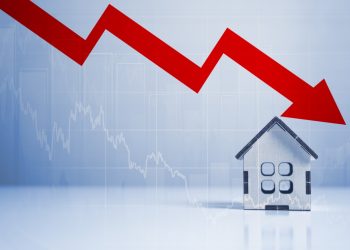Despite steadily improving local job markets and historically low mortgage rates, the U.S. homeownership rate is stuck near a 50-year low because of a perverse mix of affordability challenges, student loan debt, tight credit conditions and housing supply shortages.
That’s according to findings of a new white paper titled, “Hurdles to Homeownership: Understanding the Barriers” released Friday in recognition of National Homeownership Month at the National Association of Realtors® Sustainable Homeownership Conference at University of California, Berkeley.
Led by a group of prominent experts, including NAR 2017 President William E. Brown, NAR Chief Economist Lawrence Yun and Berkeley Hass Real Estate Group Chair Ken Rosen, today’s conference addresses the dip and idleness in the homeownership rate, its drag on the economy and what can be done to ensure more creditworthy households have the opportunity to buy a home.
“The decline and stagnation in the homeownership rate is a trend that’s pointing in the wrong direction, and must be reversed given the many benefits of homeownership to individuals, communities and the nation’s economy,” said Brown, a Realtor® from Alamo, California. “Those who are financially capable and willing to assume the responsibilities of owning a home should have the opportunity to pursue that dream.” One of Brown’s main objectives as president of NAR is identifying ways to boost the homeownership rate in a safe and responsible way.
The research, which was commissioned by NAR, prepared by Rosen Consulting Group, or RCG, and jointly released by the Fisher Center for Real Estate and Urban Economics at the University of California, Berkeley Haas School of Business, identifies five main barriers that have prevented a significant number of households from purchasing a home. They are:
Post-foreclosure stress disorder: There are long-lasting psychological changes in financial decision-making, including housing tenure choice, for the 9 million homeowners who experienced foreclosure, the 8.7 million people who lost their jobs, and some young adults who witnessed the hardships of their family and friends. While most Americans still have positive feelings about homeownership, targeted programs and workshops about financial literacy and mortgage debt could help return-buyers and those who may have negative biases about owning.
Mortgage availability: Credit standards have not normalized following the Great Recession. Borrowers with good-to-excellent credit scores are not getting approved at the rate they were in 2003, prior to the period of excessively lax lending standards. Safely restoring lending requirements to accessible standards is key to helping creditworthy households purchase homes.
The growing burden of student loan debt: Young households are repaying an increasing level of student loan debt that makes it extremely difficult to save for a down payment, qualify for a mortgage and afford a mortgage payment, especially in areas with high rents and home prices. As NAR found in a survey released last year, student loan debt is delaying purchases from millennials and over half expect to be delayed by at least five years. Policy changes need to be enacted that address soaring tuition costs and make repayment less burdensome.
Single-family housing affordability: Lack of inventory, higher rents and home prices, difficulty saving for a down payment and investors weighing on supply levels by scooping up single-family homes have all lead to many markets experiencing decaying affordability conditions. Unless these challenges subside, RCG forecasts that affordability will fall by an average of nearly 9 percentage points across all 75 major markets between 2016 and 2019, with approximately 5 million fewer households able to afford the local median-priced home by 2019. Declining affordability needs to be addressed with policies enacted that ensure creditworthy young households and minority groups have the opportunity to own a home.
Single-family housing supply shortages: “Single-family home construction plummeted after the recession and is still failing to keep up with demand as cities see increased migration and population as the result of faster job growth,” said Rosen. “The insufficient level of homebuilding has created a cumulative deficit of nearly 3.7 million new homes over the last eight years.”
Fewer property lots at higher prices, difficulty finding skilled labor and higher construction costs are among the reasons cited by RCG for why housing starts are not ramping up to meet the growing demand for new supply. A concentrated effort to combat these obstacles is needed to increase building, alleviate supply shortages and preserve affordability for prospective buyers.
“Low mortgage rates and a healthy job market for college-educated adults should have translated to more home sales and upward movement in the homeownership rate in recent years,” said Yun. “Sadly, this has not been the case. Obtaining a mortgage has been tough for those with good credit, savings for a down payment are instead going towards steeper rents and student loans, and first-time buyers are finding that listings in their price range are severely inadequate.”
Added Rosen, “A healthy housing market is critical to the overall success of the U.S. economy. Too many would-be buyers have been locked out of the market by the factors found in this study, and it’s also one of the biggest reasons why economic growth has been subpar in the current recovery.”
Today’s homeownership event in Berkeley brings together leading housing economists, policy experts, real estate practitioners and public officials to discuss current market conditions, housing policy, improving access to credit, affordable housing options and inequality.
Along with Brown, Yun and Rosen, the notable list of speakers are: Katherine Baker, California State Assembly, 16th district; Matt Regan, senior vice president of public policy, Bay Area Council; Chuck Reed, former San Jose Mayor and special counsel, Hopkins & Carley; David Bank, senior vice president, Rosen Consulting Group; and Jim Gaines, chief economist, Texas A&M University Real Estate Center;
Additional speakers are Joel Singer, CEO and state secretary, California Association of Realtors®; Nancy Wallace, co-chair, Fisher Center for Real Estate & Urban Economics and professor, UC Berkeley Haas School of Business; Laurie Goodman, co-director, Housing Finance Policy Center, Urban Institute; Carol Galante, I. Donald Terner Distinguished Professor of Affordable Housing and Urban Policy; faculty director, Terner Center for Housing Innovation; Co-Chair of Fisher Center for Real Estate and Urban Economics; and former FHA Commissioner; John C. Weicher, director, Center for Housing and Financial Markets at the Hudson Institute, and former FHA Commissioner.
“Hurdles to Homeownership: Understanding the Barriers” is the second of three papers scheduled for release in 2017 by RCG. Among the findings of the first white paper, “Homeownership in Crisis: Where Are We Now?,” released earlier this year, RCG estimated that more than $300 billion would have been added to the economy in 2016, representing a 1.8 percent bump to GDP, if homebuilding returned to a more normalized level consistent with the historical trend. The third paper – published later this year – will highlight a series of creative policy ideas to promote safe, affordable and sustainable homeownership opportunities.
For more information visit https://www.nar.realtor/.
For the latest real estate news and trends, bookmark RISMedia.com.











